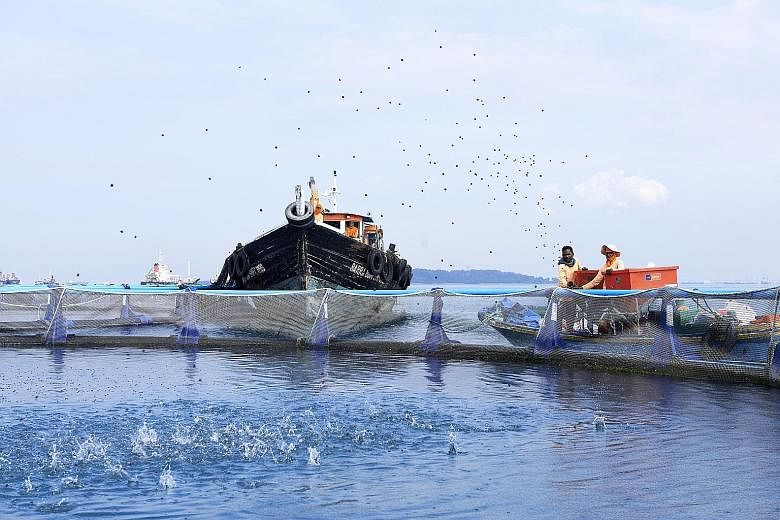Fish feed is hardly gourmet grub, but to some fish farmers, the protein-rich pellets could very well be.
This is because up to 70 per cent of the cost of rearing one fish goes to feeding it.
Commercial fish feed looks like dry dog food, and usually contains a mix of algae, a protein source such as fishmeal or soya bean, and other vitamins.
Some fish farmers in Singapore are now eager to see how technology can be used to make the feeding process more efficient.
Barramundi Asia fish farmers, for example, are considering investing in an automatic remote feeding system that will allow them to monitor how much feed is given, and whether the fish are eating it. This will reduce overfeeding, and help the farm cut costs.
Such systems were on display last month at an aquaculture technology exhibition in Norway, attended by Singapore fish farmers and government officials.
"This system will help us ensure the feed does not get wasted, and will also eliminate manpower requirements," said Mr Andrew Kwan, group managing director of Commonwealth Capital, a majority owner of Barramundi Asia.
Mr Kwan, 50, attended the exhibition with the farm's managing director Joep Staarman, 59, and board member Hans den Bieman, 58.
Currently, workers at the farm off Singapore's southern coast feed the fish manually by scattering the fish feed into the sea pens. About six workers are needed to do this.
The automated system comprises a sophisticated network of sensors, cameras and control panels that allow a person sitting in a control room to monitor how much feed is being dispensed, and whether the fish are eating it.
"The person in the control room who is in charge of feeding the fish will be able to monitor the consumption of the feed by the fish, and the moment they are satiated, the food supply can be cut," said Mr Kwan.
-
70%
Percentage of the cost of rearing one fish that is spent on feeding it.
"Seventy per cent of the cost of producing fish comes from the feed alone. Being able to control and manage that efficiently will impact the bottom line tremendously," he added.
Mr Chan Wei Loong, programme chair at Republic Polytechnic's Diploma in Marine Science and Aquaculture programme, said most farmed fish do not know satiation and will eat as long as there is food.
An automated system that dispenses the correct amount of feed at predetermined intervals could help to reduce manpower needs, he said. Farmers usually determine the amount of feed based on the estimated weight of fish in each cage.
"It enhances productivity by having the human deployed to do something else," said Mr Chan.


